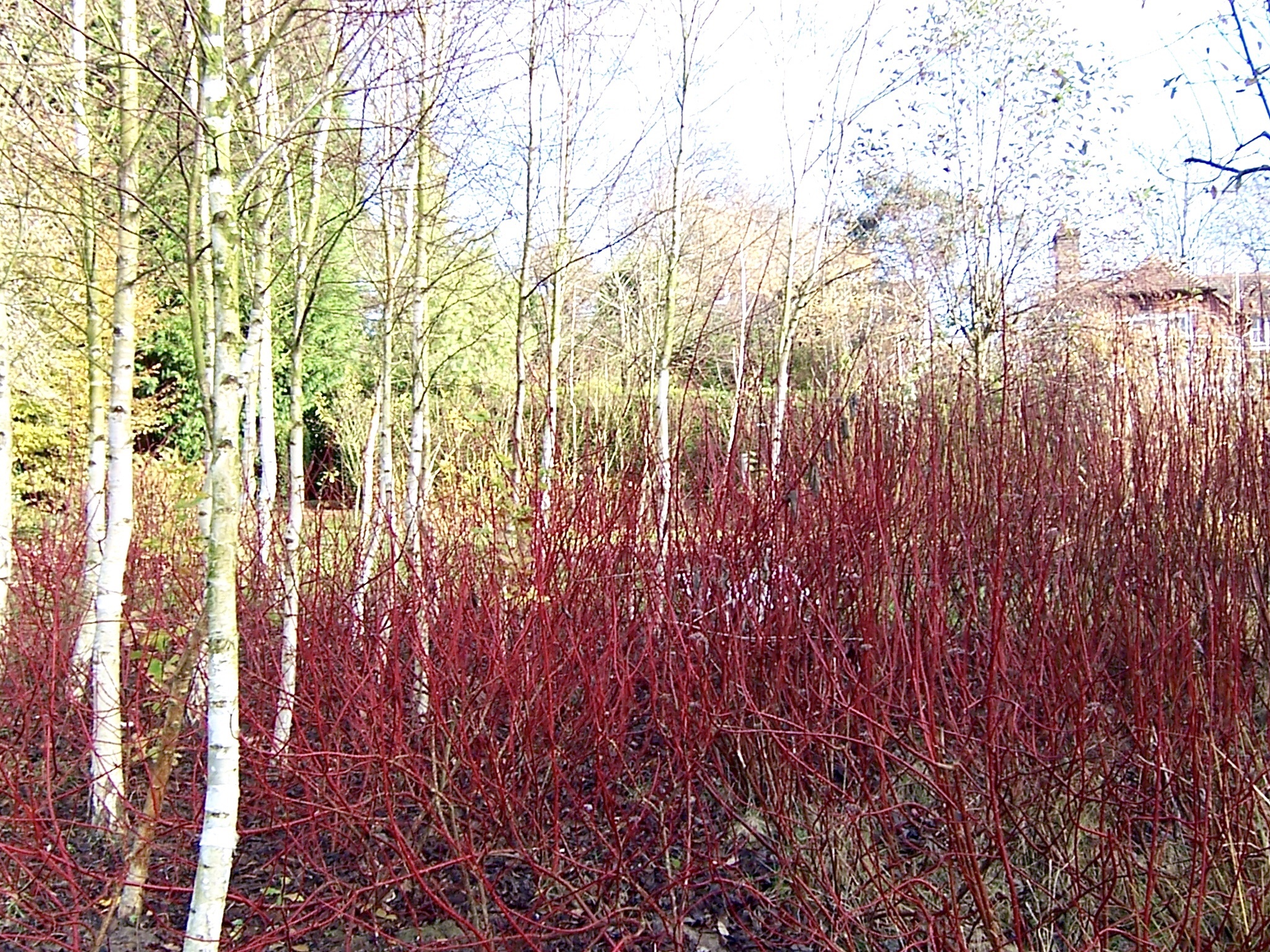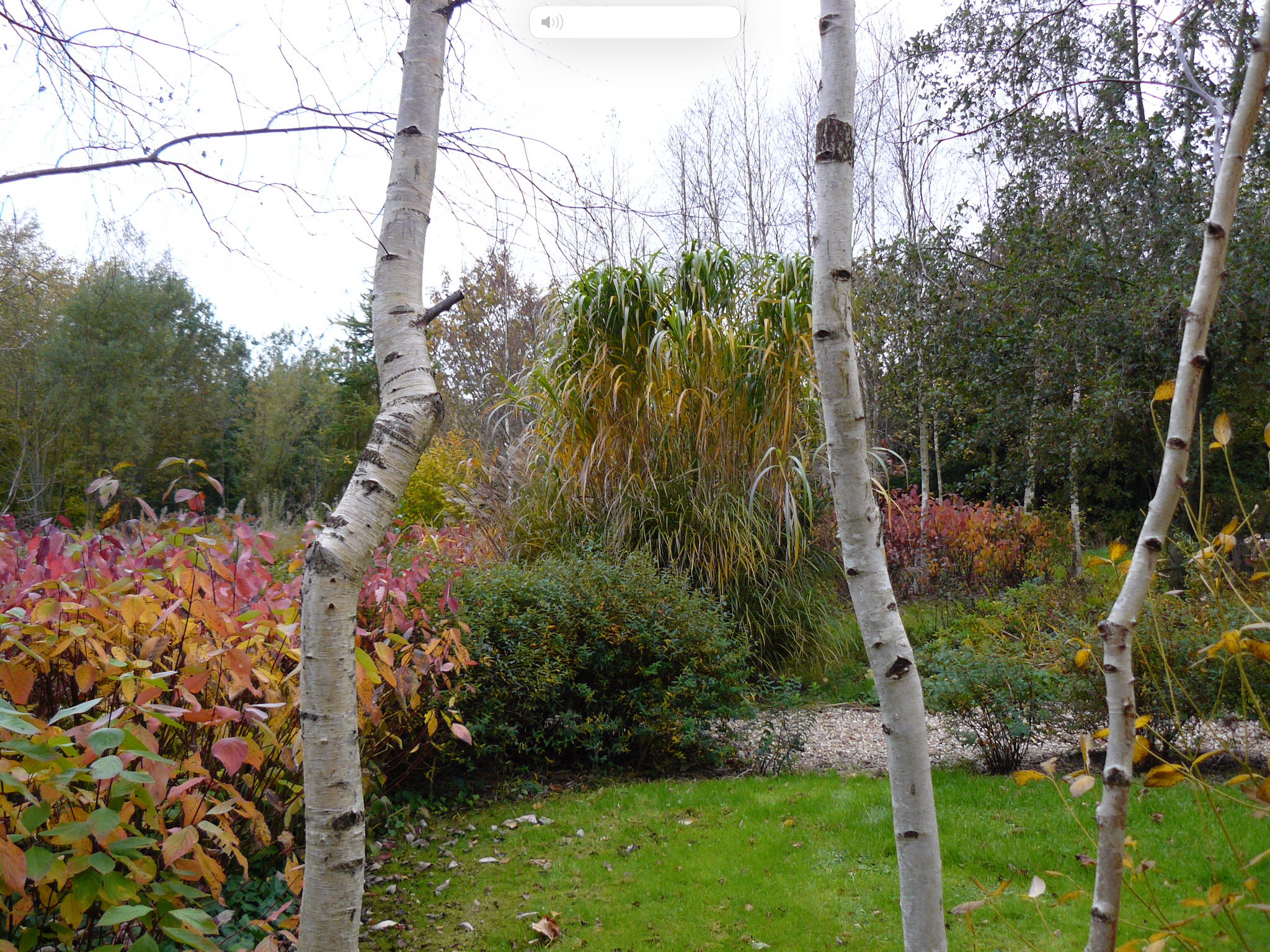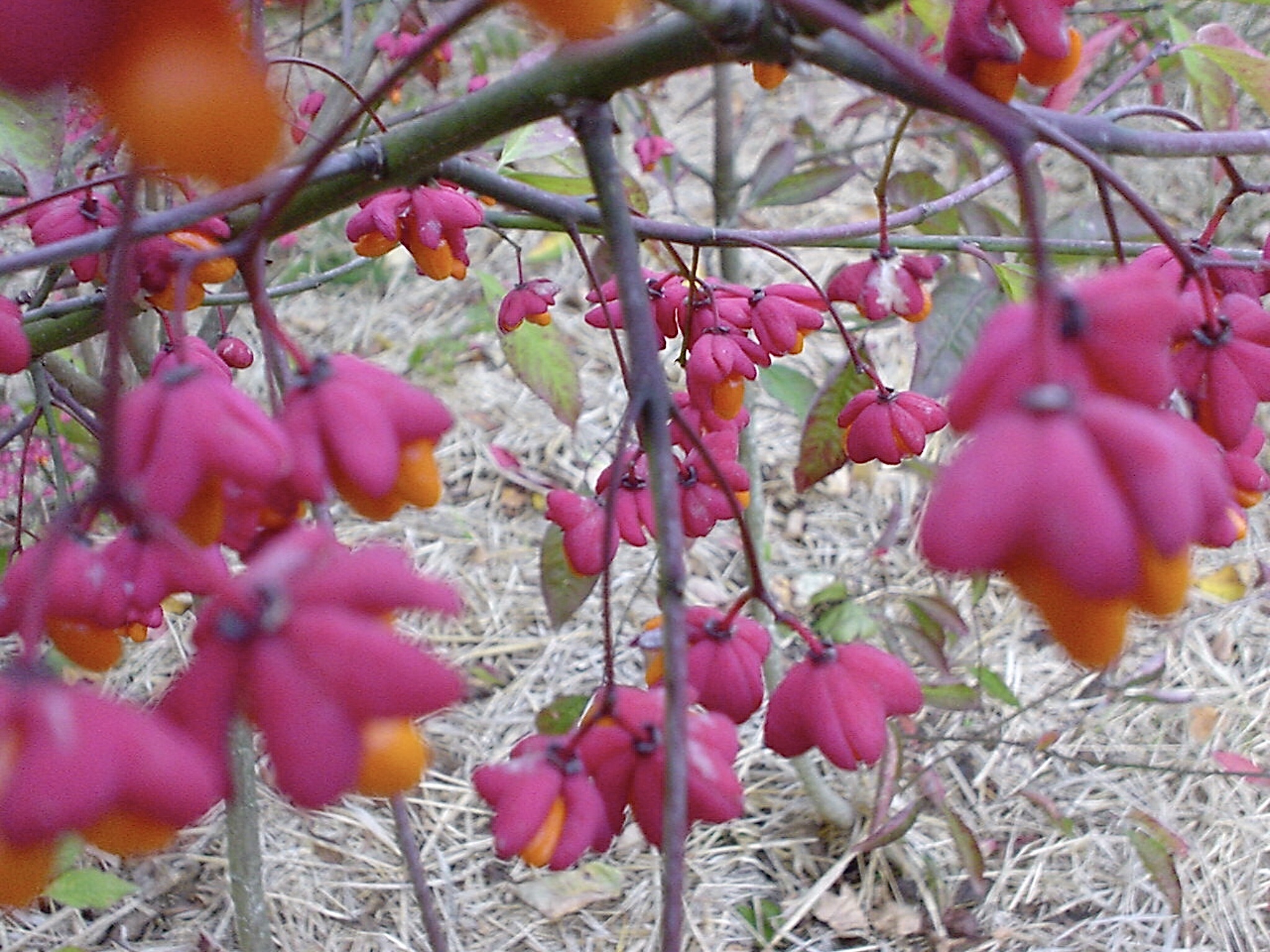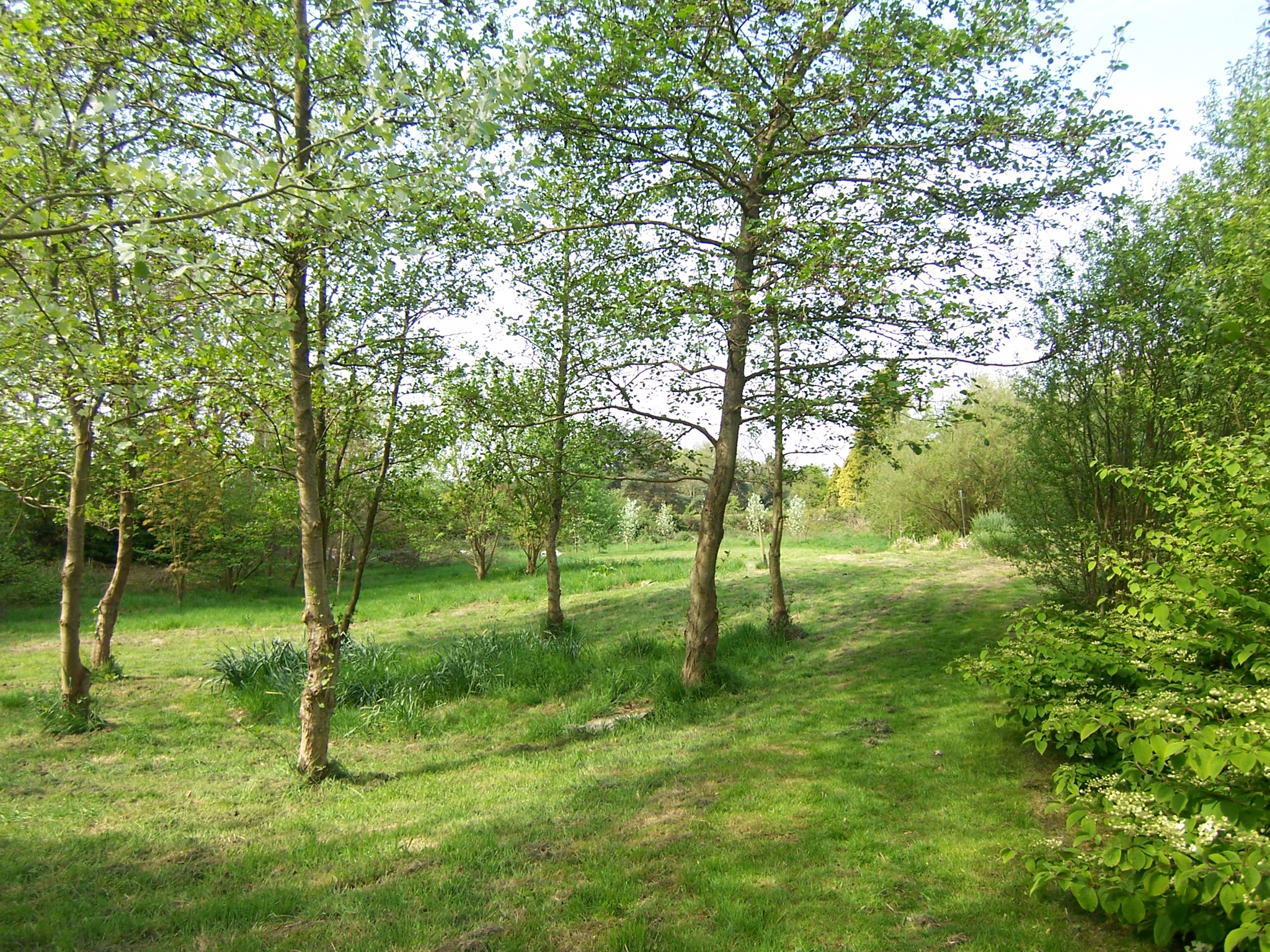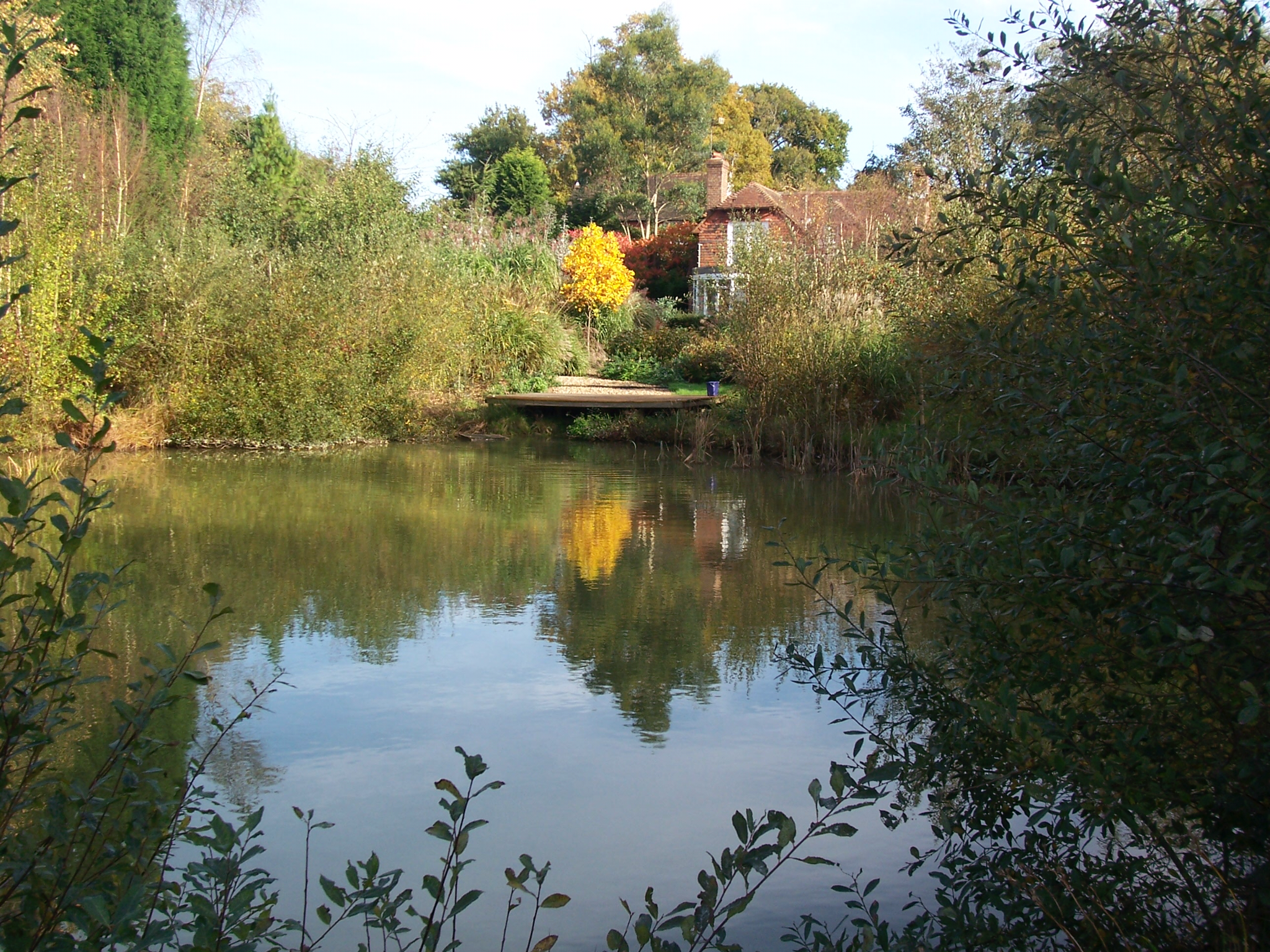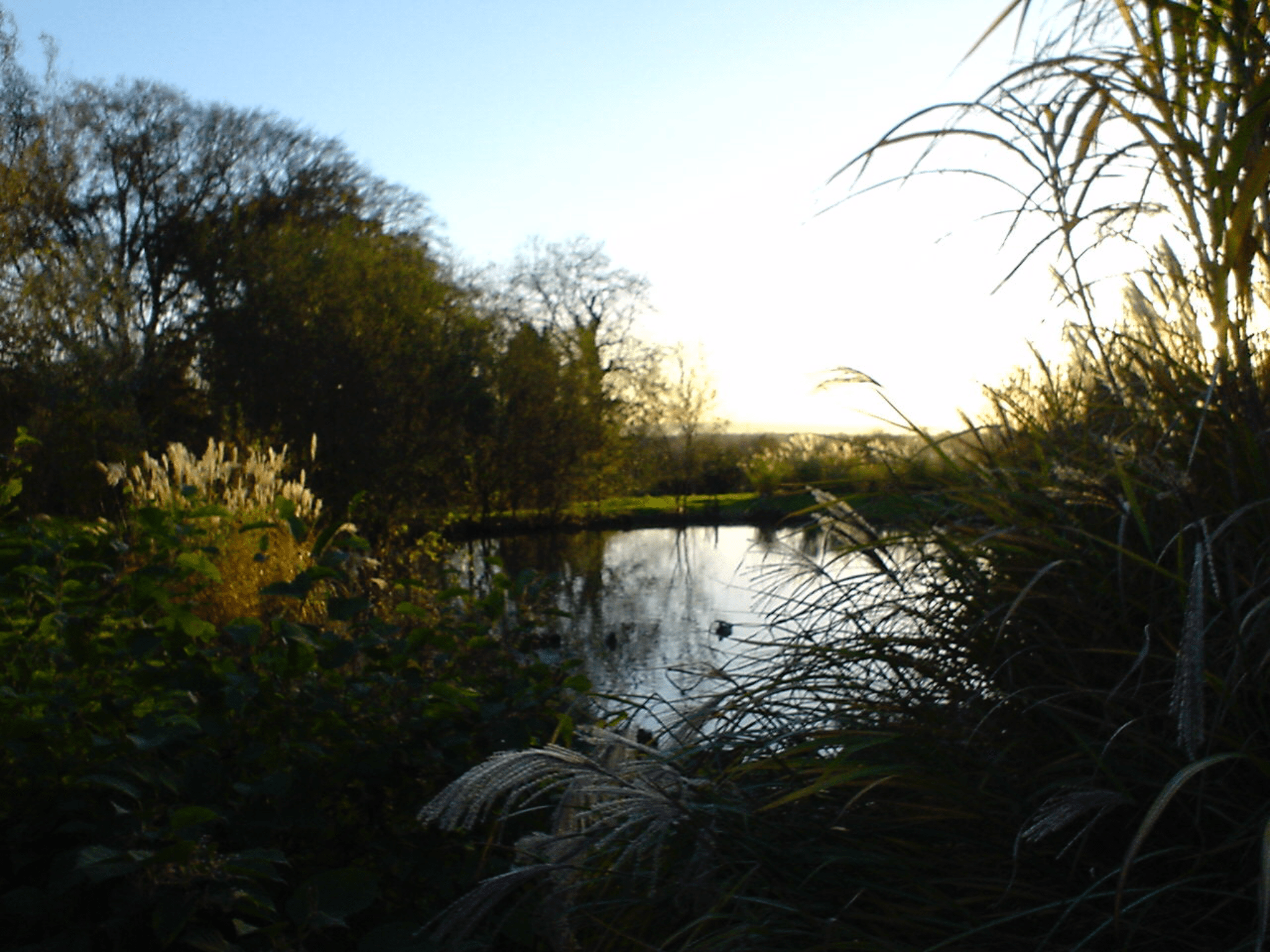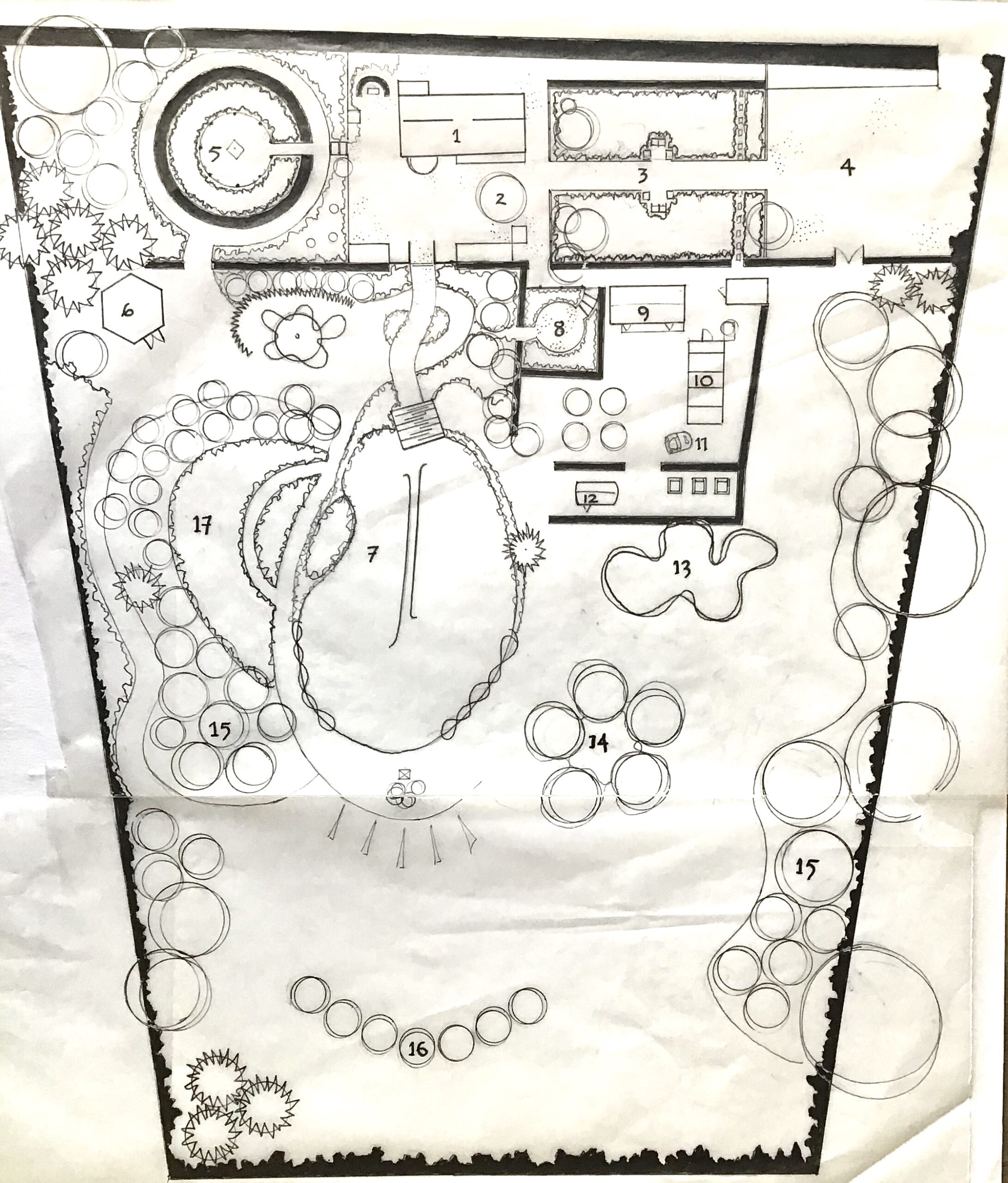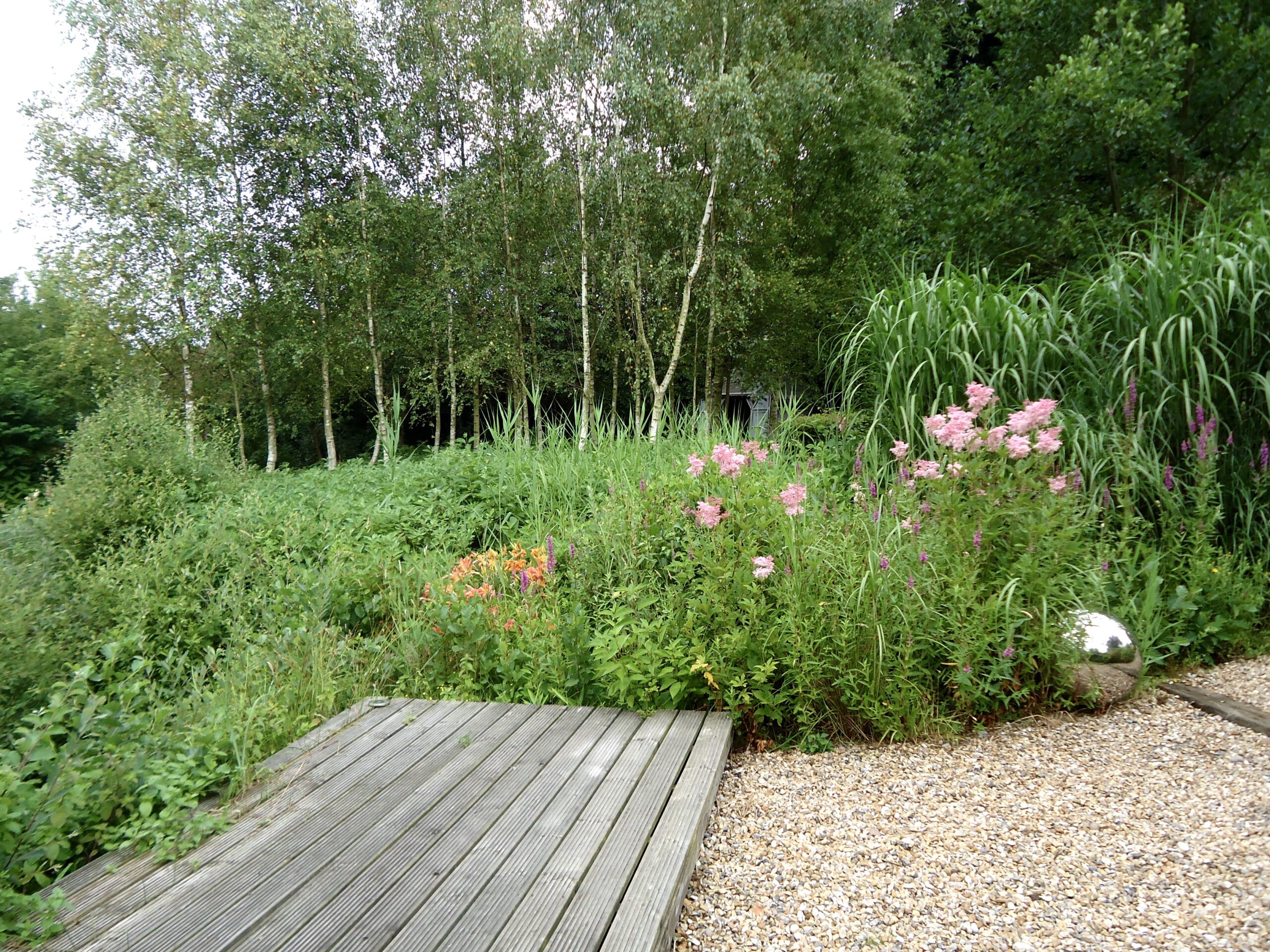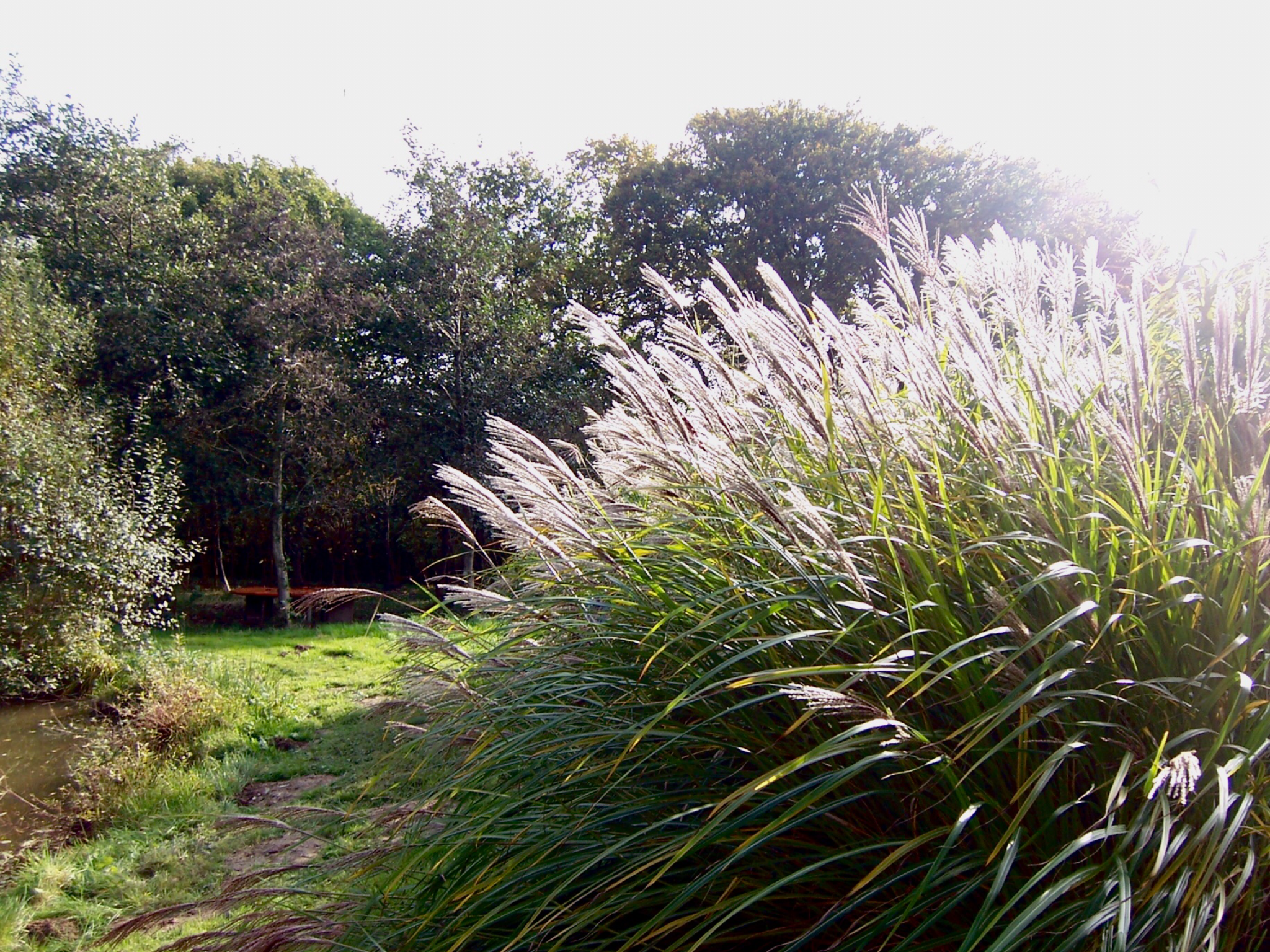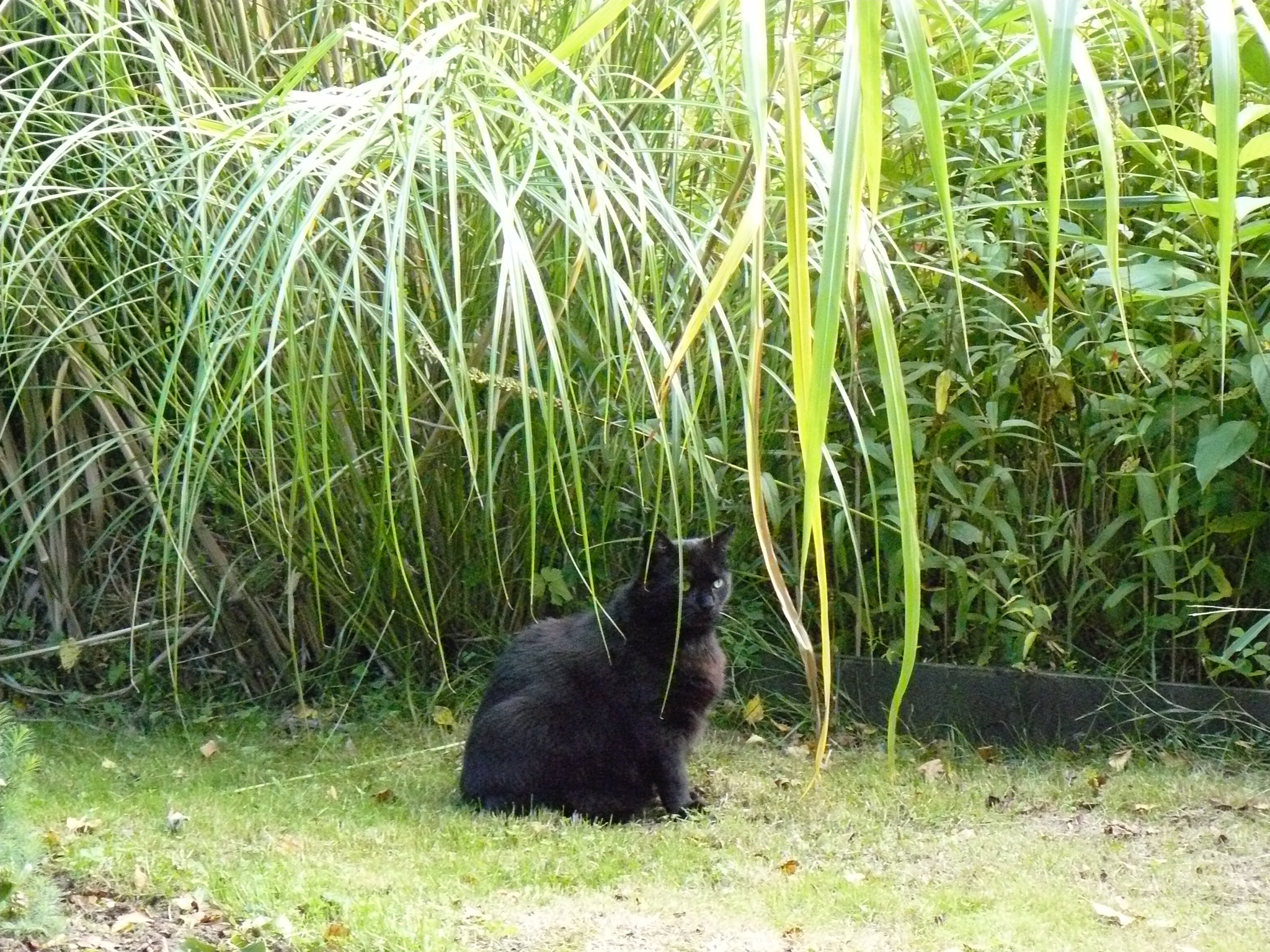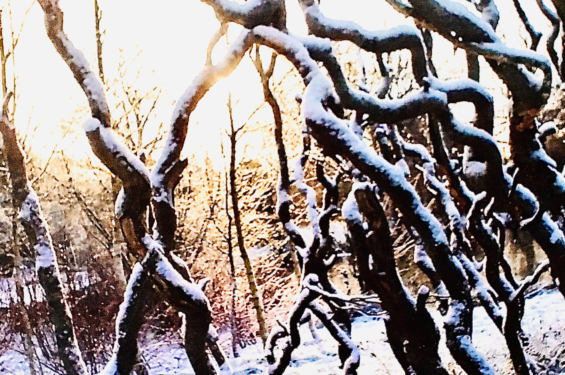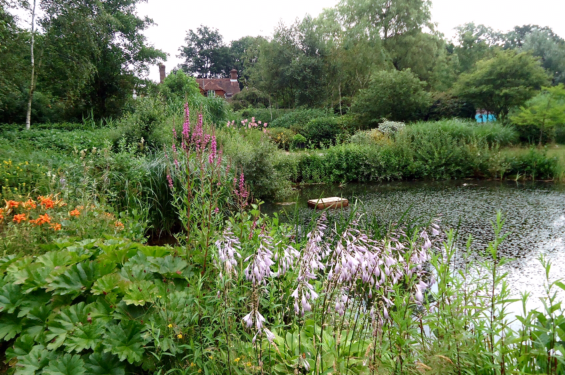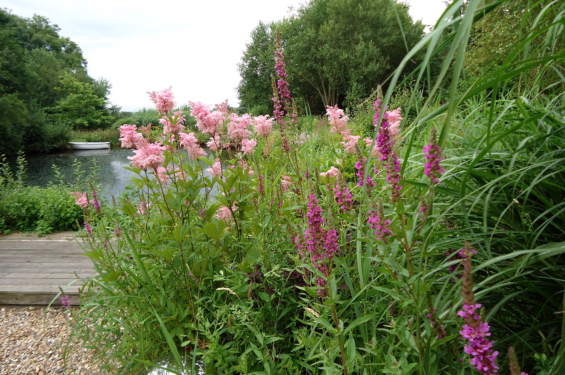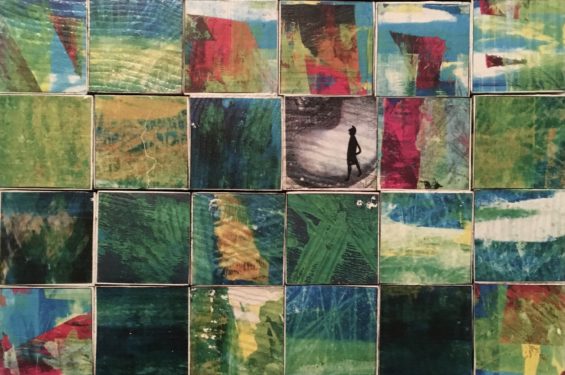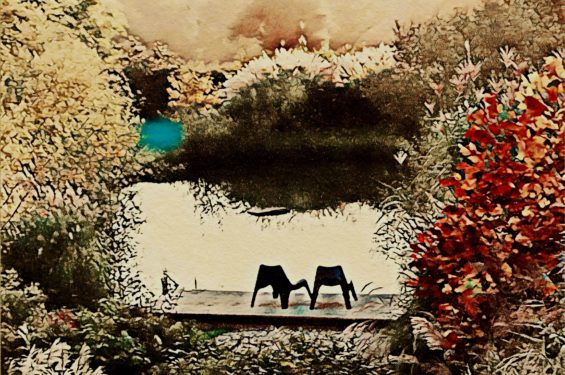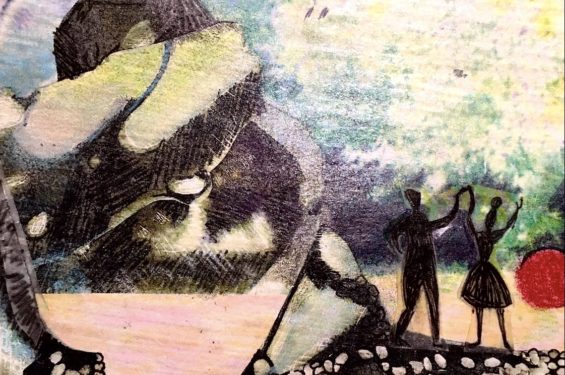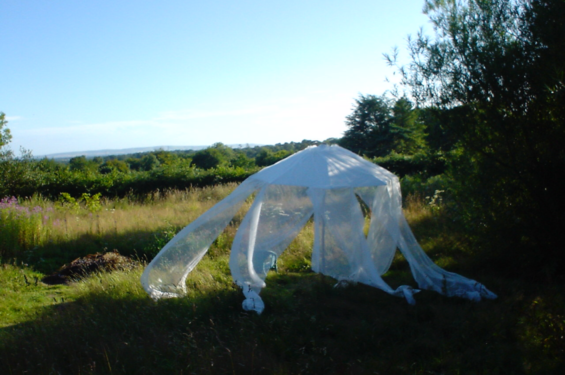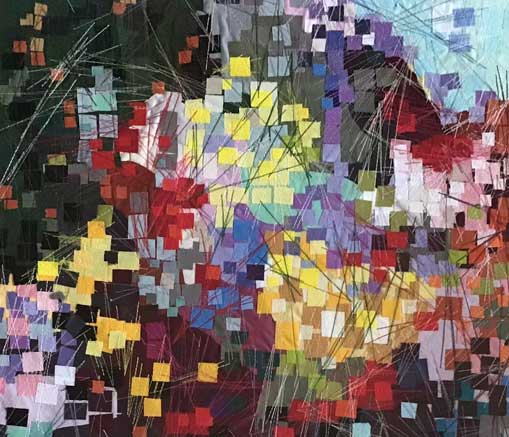Joining Up the Design
Projects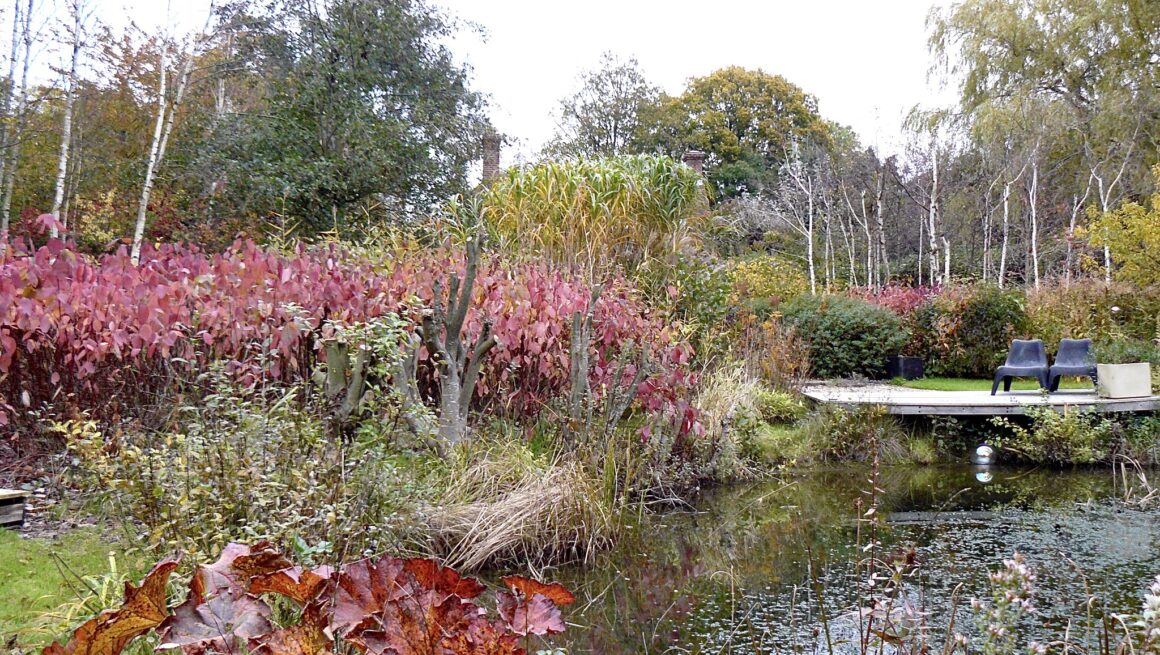
The development of this big space, the meadow garden, gradually evolved as time went on. It was ten years before we could afford to dig the pond, but a lot was happening everywhere else.
We had increased our stock and variety of native trees and shrubs planted in small groves of mixed groupings. In several areas we planted informally shaped borders of Silver Birch underplanted with red or yellow stemmed Dogwood. These matured into a strong feature which visually linked different parts of the garden.
The Orchard had been hedged after the Waverley Caravan and the Polytunnel were installed. The Grass Garden was also in this self contained space.
In front of the Privet hedge to the west of the house we planted many Euonymus europaeus (Spindle) trees which were magnificent in the autumn. In front of these we placed a low curved lime hedge which separated and defined the border.
A circle of Alders went into a wet space. Eventually the pond overflow drained into this and the trees grew very fast in this damp environment, as did numerous Willows, which were seriously invasive.
The pond construction in 1996 changed our perspective of the whole meadow garden, and made sense of it. Here was a visually reflective focal point in the centre of the view from the house. It joined up the planting and connected what we’d established, which previously had felt interesting but disjointed, and lacking purpose in terms of overall design.
Once the pond was established it became more obvious to us how the whole design could be connected up; where new paths should be mown, and new borders put in. Carefully chosen and sited new trees and shrubs would enhance the reflections, and new viewpoints across the pond suddenly began to prove to us that it wasn’t just about a view to the south. We now had more scope for development of both open and secluded spaces.
Our confidence, experience and expertise had increased. Propagation, shortcuts and sourcing bargains was all part of it. We added interesting trees as focal points, learnt new techniques for managing and developing the meadow garden and chose varieties of plants which enhanced the setting. Miscanthus and Phormium tenax were totally at home here. They added scale and movement to what was a fabulous, but static view.
It was around this time that we planted up the perennial border. It was huge and colourful; a wildlife haven. We were amazed to have an excess of stock and pleased to have the space to use it all.
As time progressed we looked for lower maintenance approaches, because it had become a monster of a garden. This new perennial border was easy compared to the mixed border from the entrance to the house. The answer to this was – no shrubs, so no hand weeding around everything. In late winter we could strim this area, together with the giant Miscanthus plantations, rake it up, mulch with compost, and by spring the new foliage would be coming through again.
-
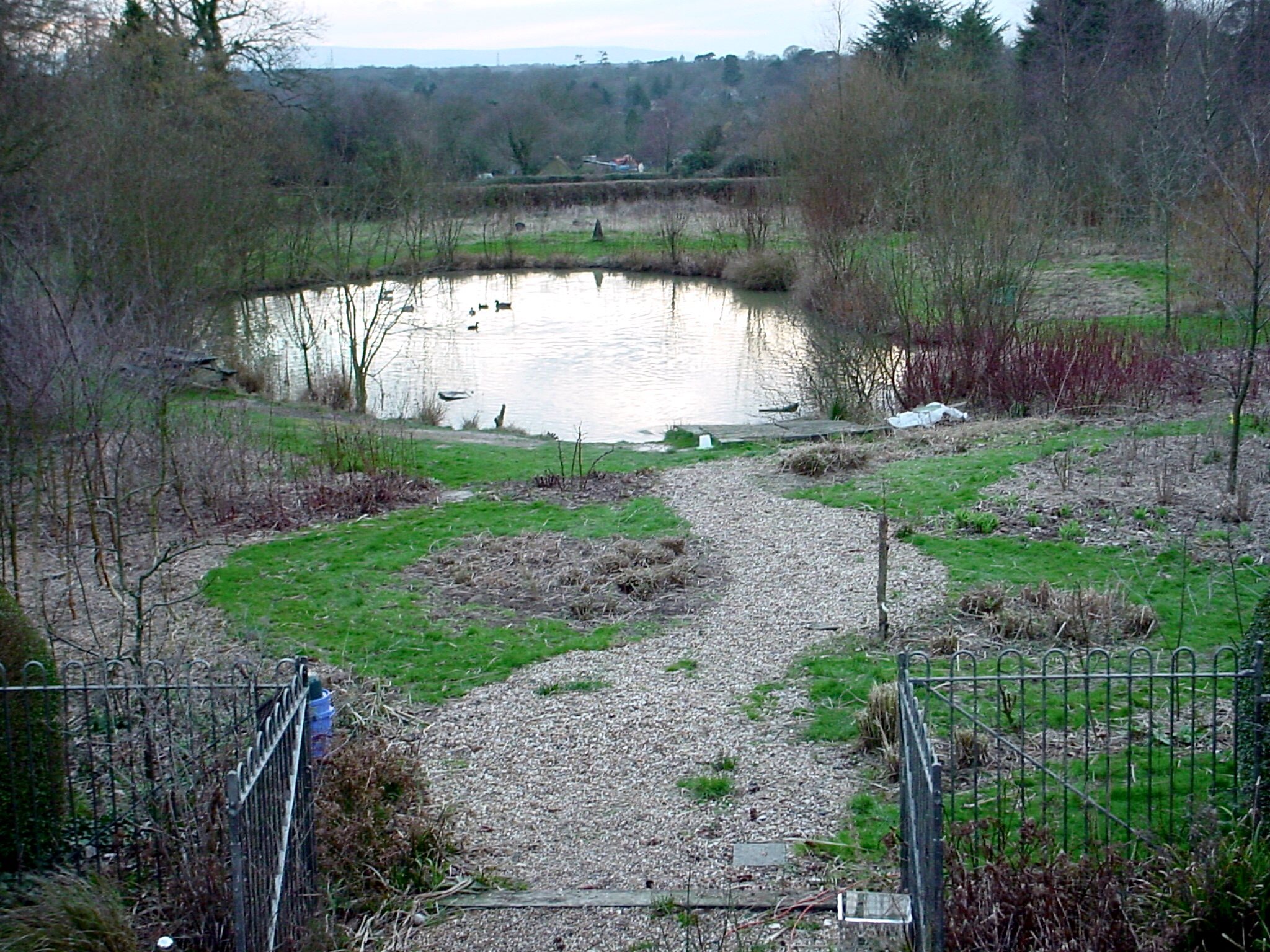
The garden in winter -
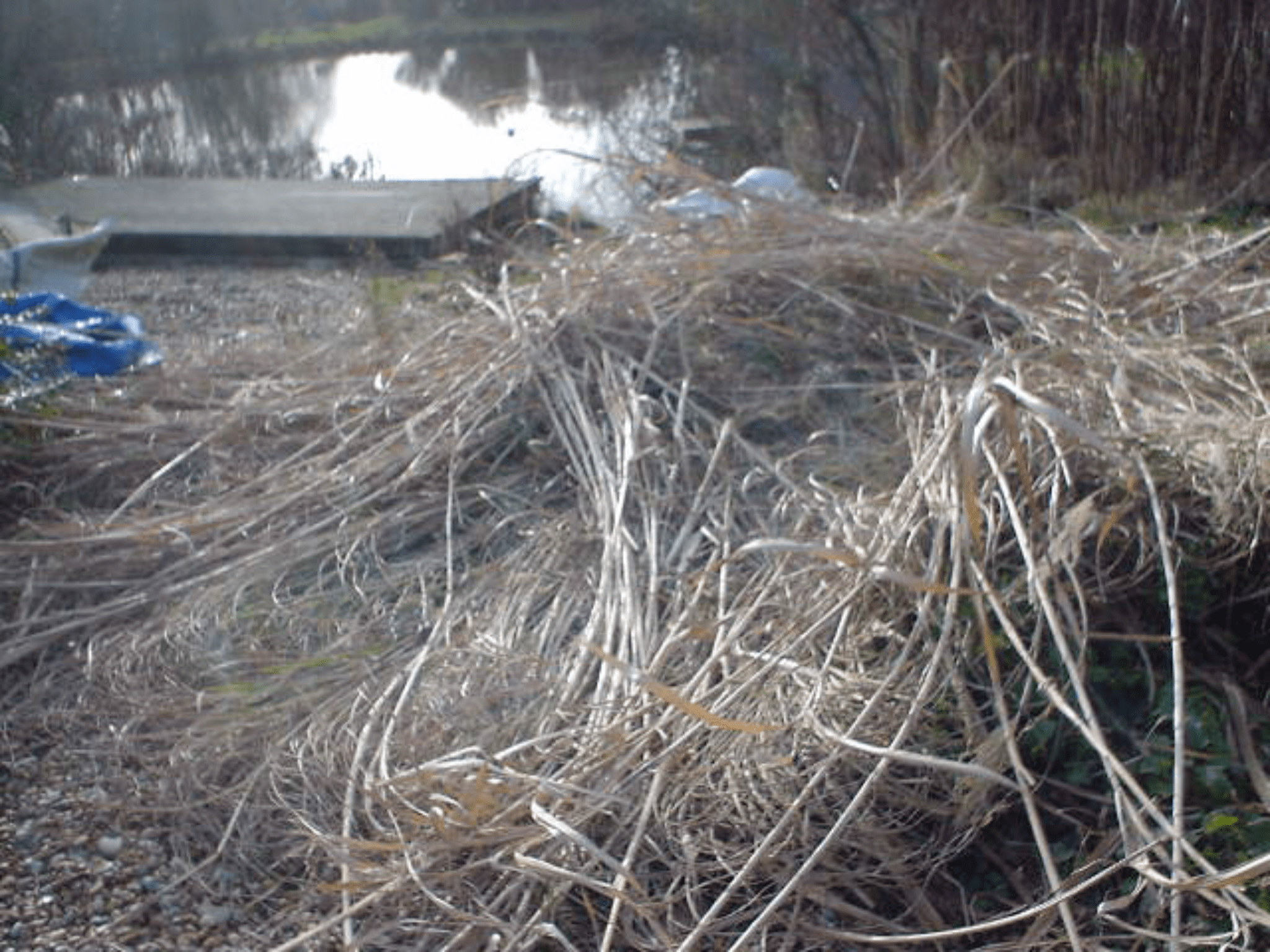
Cutting the Miscanthus
